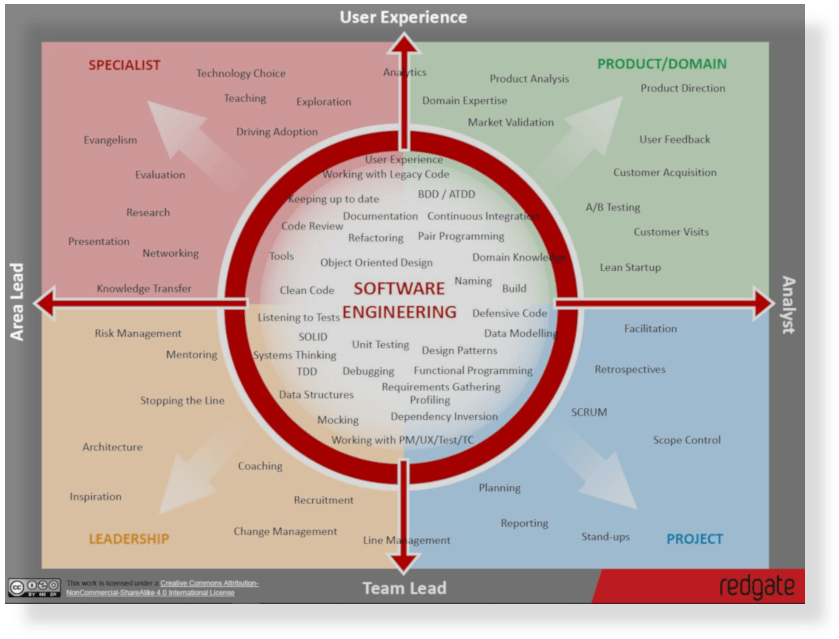Reflecting on seven years of skills maps
Back in 2013, Redgate shared our internal skills maps with the world. It remains one of the most visited posts on our blog. But where did we go from there?

Navigating skills maps
When Redgate introduced skills maps, they were a huge success. They were rapidly adopted by almost every role in the company and proved a crucial tool in helping to develop the careers of numerous Redgaters. We even saw them inspiring other companies to take a similar approach.
But as time went on, they started to show some weaknesses.
Many skills maps were hard to read. Our Software Engineer skills map had over 30 core skills, for example. That was hard to understand, and people struggled to plan their development with so many detailed skills on display.
While the skills maps show the general direction towards various roles, separate maps were not connected enough to really guide people along that journey.
Finally, we really struggled to keep the skill maps up to date. Our internal roles have changed a lot in the past few years, but many of our skills maps remain unchanged from their original 2013 release.
Getting back on track
We had to accept that skills maps weren’t giving effective guidance for personal development. This put pressure on our people managers, who would give the best guidance they could, but without the right information to lean on.
With many people looking to develop, we captured role expectations in some ‘What Good Looks Like’ documents. These examined our roles, expanded to some broad skills areas, and gave examples of exceptional performance alongside anti-patterns we would encourage against.
This alleviated some short-term pain and did help some of those development conversations to get moving. However, the documents hit many of the same weak spots our skills maps did. They gave excellent support for short-term development but lacked guidance for levelling yourself up in your current role, or for progressing to a new role.
The ‘What Good Looks Like’ descriptions were also often huge walls of text that people couldn’t engage with. And, like many other documents, they were easily lost in the depths of a document management system. We saw their use trail off quickly after their initial payoff.
What did we need?
We realized something needed to be done to help everyone at Redgate develop their skills and progress their careers. We needed to learn the lessons of our previous skills maps and ‘what good looks like’ approaches, taking the positives while addressing the negatives.
But what would that look like?
Thankfully some other companies had already been working on this, perhaps even building from our skills maps. Maybe it was time we learned from them …
Find out more in the second post in this series, The path beyond skills maps.